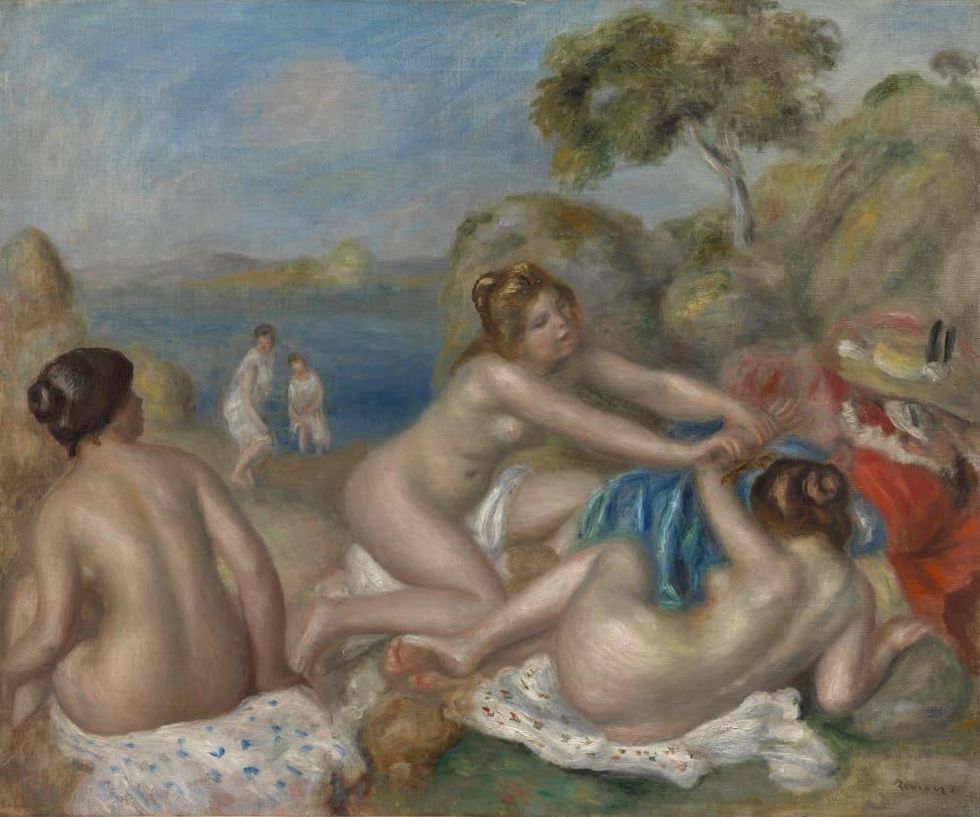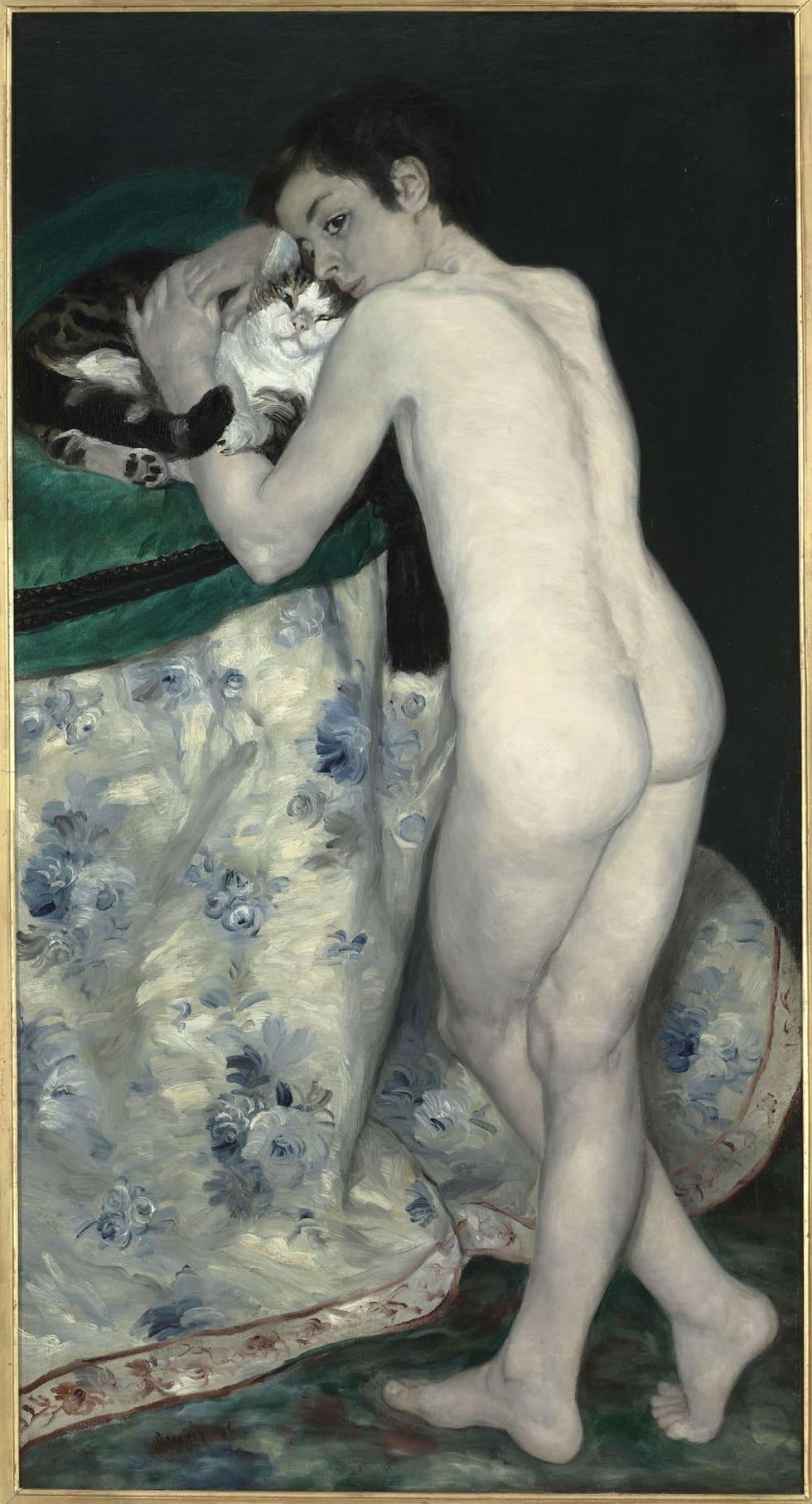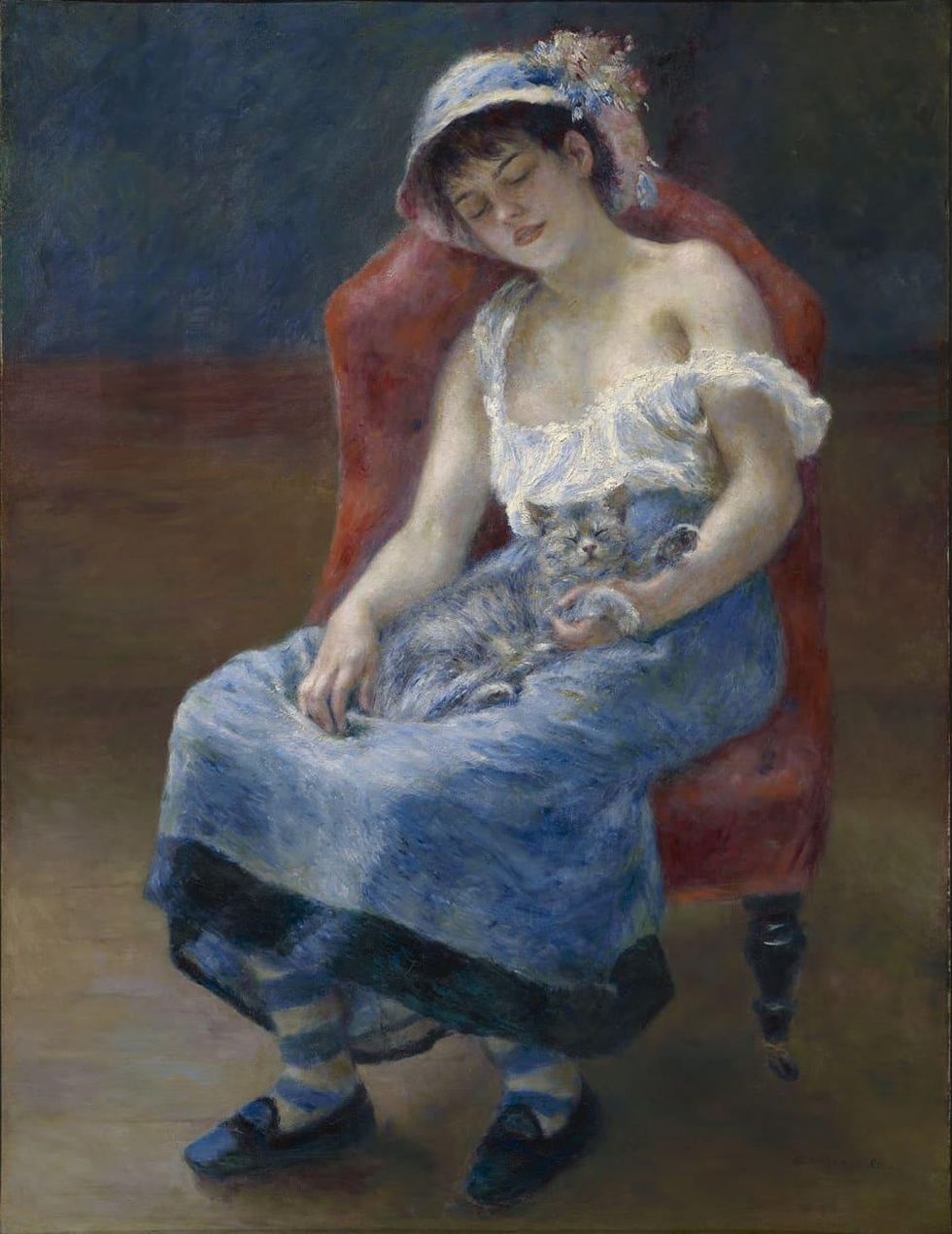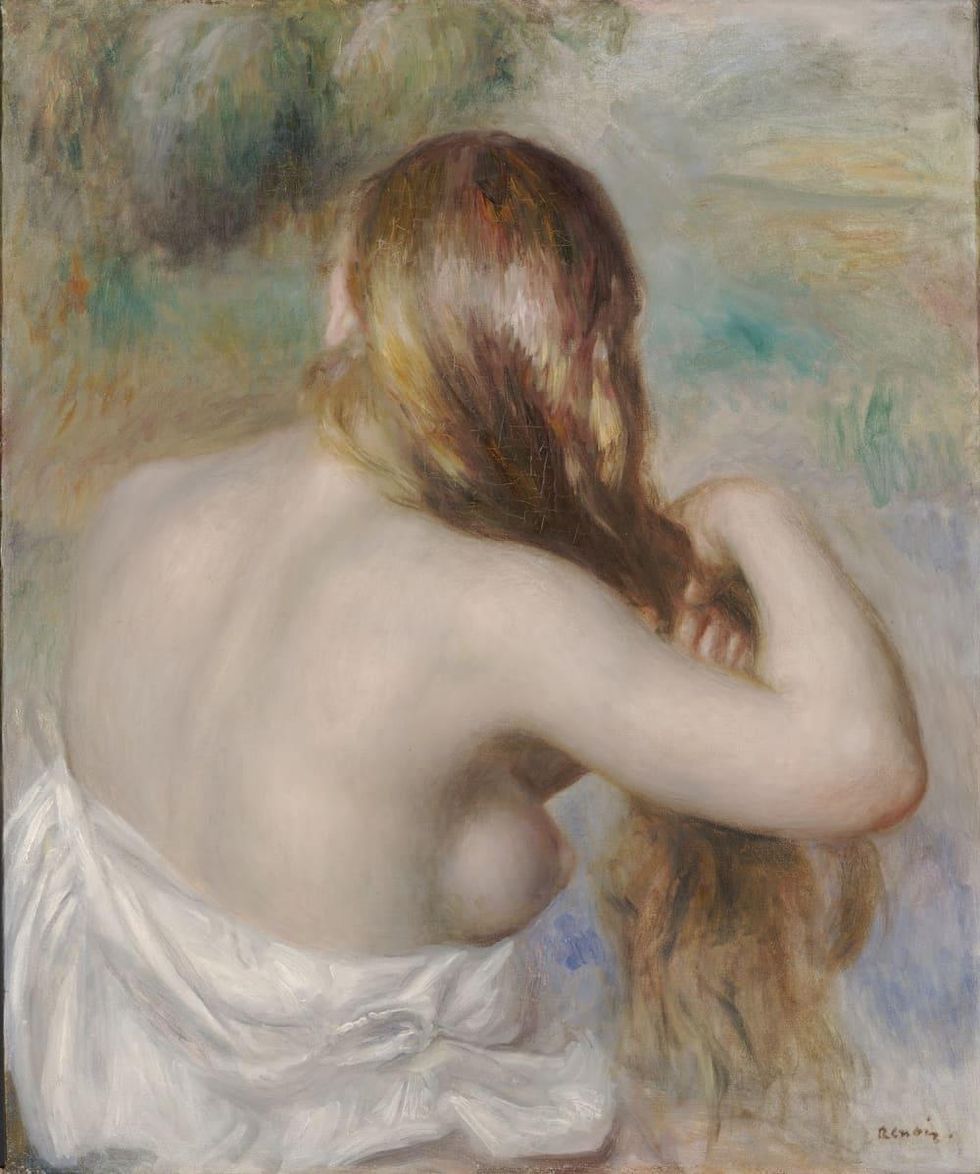Body of work
New Kimbell exhibition lets viewers draw their own conclusions about Renoir's nudes
The Kimbell Art Museum is on track for a blockbuster year. First, Monet brought people there in droves. Now, Renoir gets his chance.
That is, if viewers will take a chance on Renoir.
The Fort Worth museum's newest exhibition, "Renoir: The Body, The Senses," opened October 27 for a three-month run that will span the bustling holiday season. It is the first major exhibition devoted solely to French artist Pierre-Auguste Renoir's lifelong treatment of the nude.
There's a lot of material to work with, as scholars often talk of Renoir's "preoccupation" with the female form. The exhibition includes about 60 paintings, drawings, pastels, and sculptures by Renoir, as well as works by his predecessors, contemporaries, and followers.
"These are among the most prized possessions in the national and international collections they come from," says Eric M. Lee, director of the Kimbell Art Museum, in a statement.
Co-organized by George T. M. Shackelford, deputy director at the Kimbell, and Esther Bell, the Robert and Martha Berman Lipp Chief Curator at the Clark Art Institute in Williamstown, Massachusetts, the Fort Worth display follows a critically acclaimed presentation at the Clark over the summer. One newspaper even headlined its review, "How Renoir’s nudes helped the Clark get its groove back."
It debuts at the Kimbell just a month and some change short of the 100th anniversary his death in France on December 3, 1919.
But Renoir isn't everyone's cup of thé.
Renoir-hating is a passion, a hobby, a movement, even. In its review of the Clark presentation, The Washington Post wrote, "Renoir-loathing is a default position in today’s art world and seems to gather more adherents in the wider population each year."
Renoir's paintings of the human form weren't so popular when he first displayed them, either. During his lifetime, he was idolized by artists, but also brutally condemned by them.
In 1876, critic Albert Wolff wrote in Le Figaro, "Would someone kindly explain to M. Renoir that a woman's torso is not a mass of decomposing flesh with the green and purplish blotches that indicate a state of complete putrefaction in a corpse" — referring to Study: Torso, Effect of Sun, which the exhibition organizers point out is now regarded as one of the high points of Impressionism.
To be sure, there are lots of those blotchy, fleshy nudes on display at the Kimbell.
Too blotchy? Too fleshy? Too many? That's for the viewer to decide.
Shackelford and Bell say the aim of the presentation is to provide new perspectives about Renoir's stylistic trajectory through the lens of a singular subject he painted so often. The exhibition doesn't necessarily extol him, and it doesn't follow a linear path through his career.
But it does present him as an artist worthy of investigation, contemplation, and reconsideration. They encourage audiences to look at his use of light and dark — "how the body is a receptacle for sunlight," as Bell put it — as well as his changing style over time and his influence on other artists. (The very last painting in the exhibition is Picasso's Two Reclining Nudes, 1968, influenced by Renoir.)
Must-see paintings on display include Sleeping Girl, 1880; Blonde Braiding her Hair, 1886; Boy with a Cat, 1868 (one of the only male nudes in the exhibition); the full-length Reclining Nude and Large Nude on Cushions, 1906 and 1907; The Bathers, 1918-19; and Bather Seated in a Landscape, Called Eurydice, 1902-4.
"By showing Renoir's works alongside those of artists as diverse as Boucher, Degas and Picasso, we're hoping to demonstrate the ways in which his achievements grow out of the past, react to his present, and exert a profound influence on the future," Shackelford says. "We think these juxtapositions will surprise and delight exhibition visitors."
In other words, you might be surprised at how much you like them.
Or ... not.
You get to draw your own conclusion.
"Renoir: Body and the Senses" will be on view at the Kimbell through January 26, 2020. Tickets are $18 for adults, $16 for seniors and students, $14 for children ages 6-11, and free for children under 6. For more information and tickets, visit the museum's website.






 Gun presented to Frank Sinatra. RIAC
Gun presented to Frank Sinatra. RIAC  "Princess Diana: Accredited Access," featuring photos of Anwar Hussein, ran January 17-April 6, 2025, at Arlington Museum of Art. Getty Images
"Princess Diana: Accredited Access," featuring photos of Anwar Hussein, ran January 17-April 6, 2025, at Arlington Museum of Art. Getty Images  The Cookies Chaos Milkshake is a winner. Photo courtesy of State Fair of Texas
The Cookies Chaos Milkshake is a winner. Photo courtesy of State Fair of Texas